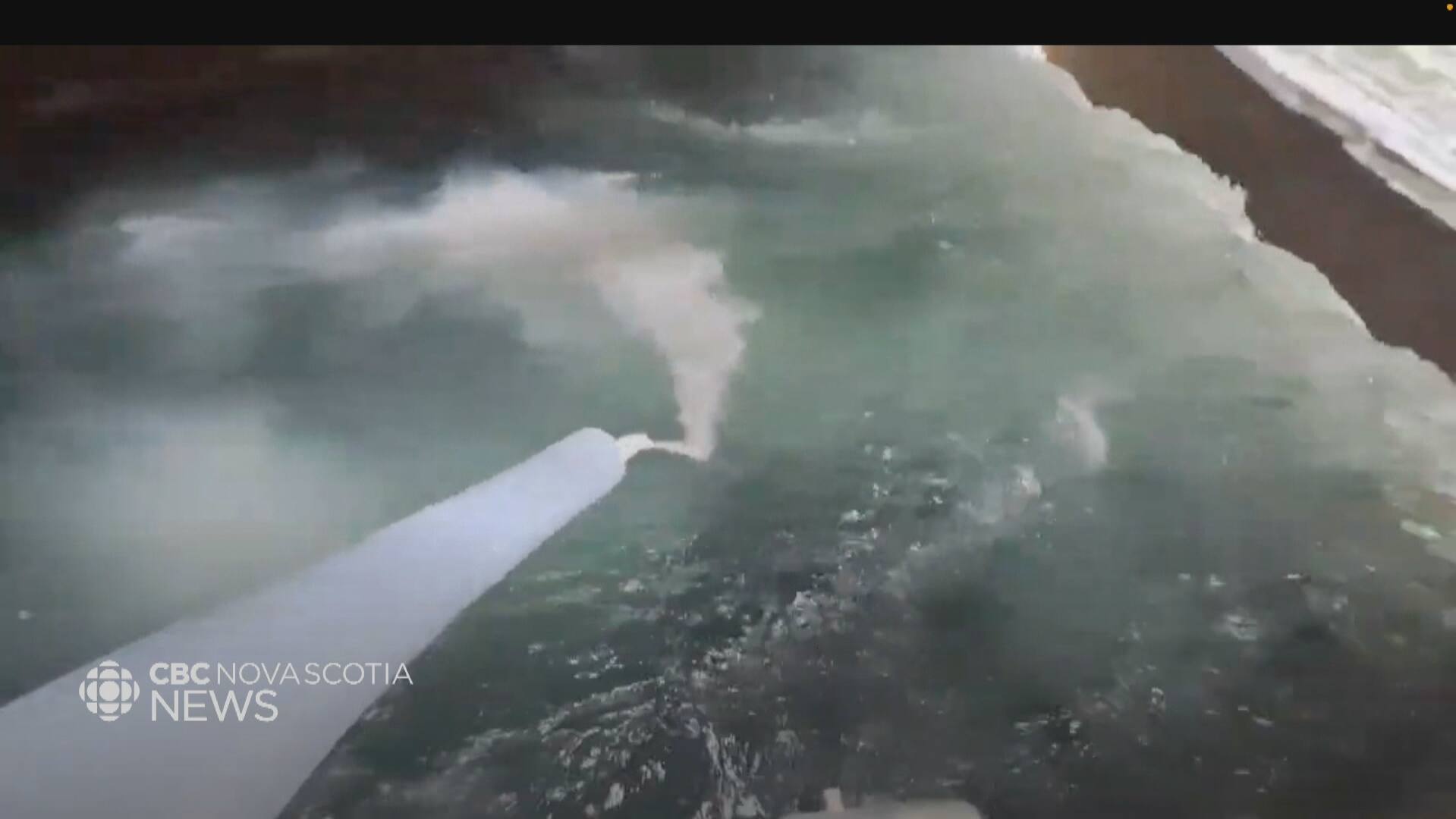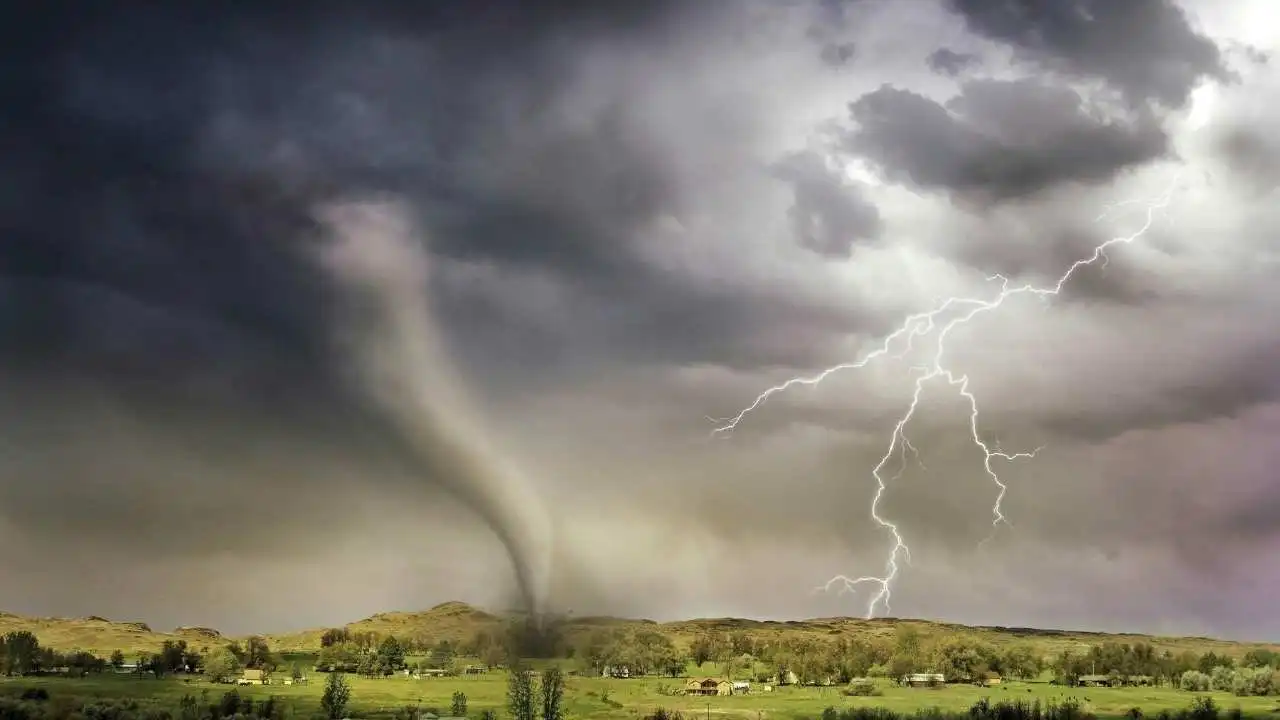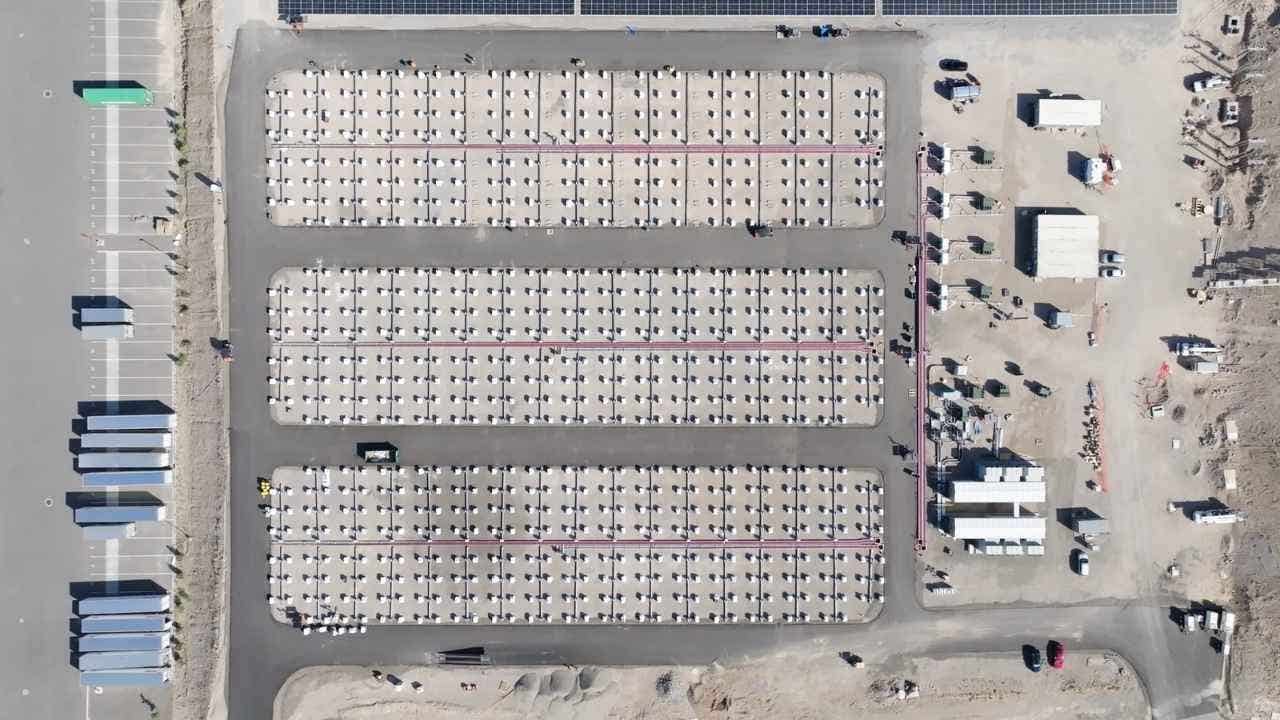How oceans could be used for carbon capture on a big scale

Our planet is changing. So is our journalism. This weekly newsletter is part of a CBC News initiative entitled “Our Changing Planet” to show and explain the effects of climate change. Keep up with the latest news on our Climate and Environment page.
Sign up here to get this newsletter in your inbox every Thursday.
This week:
- How oceans could be used for carbon capture on a big scale
- Dam! Beavers pose a methane problem in the Arctic
- Humidity makes a sweltering apartment that much harder to live in
How oceans could be used for carbon capture on a big scale
Scientists have said we’re poised to overshoot the 1.5 C warming target enshrined in the Paris Agreement, and that in order to return to 1.5 C by 2100, we would need to remove vast amounts of carbon dioxide from the atmosphere.
Carbon capture from smokestacks or the air, using technology and tree planting, has received a lot of attention and funding. But last week, a few hundred scientists around the world argued that more attention should be paid to carbon capture in the ocean.
“The ocean’s carbon content is 50 times larger than what is in the atmosphere. Its sheer size also means that ocean-based climate solutions can be scaled to significantly mitigate climate risk,” they wrote in a letter posted on the web page of Ocean Visions, a non-profit umbrella group for universities and oceanographic institutions focused on ocean-climate restoration solutions.
The problem? Even scientists know little about the effectiveness, risks or impacts of ocean carbon capture solutions.
Kate Moran, president and CEO of Ocean Networks Canada and a spokesperson for the scientists who wrote the letter, said more information is crucial for making policy decisions about ocean carbon capture.
“We do need to, as a collective community, get behind research needed to understand these issues, and it’s pretty urgent,” she said in an interview from the Canadian Coast Guard ship Tully off the coast of B.C., where she is doing some of that research.
The letter was signed by a number of scientists from the Canadian firm Planetary Technologies, including its chief ocean scientist, Will Burt. Planetary Technologies ran its first ocean tests of its carbon capture technology in Halifax harbour this week (see photo above).
Burt hopes the letter helps the public “build some confidence that what we’re doing is … widely believed scientifically to be worth exploring.”
WATCH | Scientists hope antacid could help relieve climate change
Halifax Harbour is getting a dose of Tums to see if that will help remove carbon from the atmosphere. Paul Withers has the story.
By now, you might be asking, “OK, but what kinds of solutions are we even talking about?”
They fall into two main categories: biotic and abiotic.
Biotic ocean carbon removal is similar to planting trees on land to absorb CO2, except it involves marine or coastal ecosystems and plants. The carbon they store is called blue carbon, and it can involve:



Abiotic solutions include:


Planetary Technologies’ Burt said that while reducing emissions is by far the best tool for tackling climate change, “we’re going to need more than that.”
Ocean carbon capture “could be a really key player.”
— Emily Chung
Old issues of What on Earth? are here. The CBC News climate page is here.
Check out our radio show and podcast. This week, meet the people doing the dirty work of planting millions of trees, one by one, across Canada. What On Earth airs on Sundays at 11 a.m. ET, 11:30 a.m. in Newfoundland and Labrador. Subscribe on your favourite podcast app or hear it on demand at CBC Listen.
Watch the CBC video series Planet Wonder featuring our colleague Johanna Wagstaffe here.
Reader feedback
Gaille Musgrove responded to last week’s story on invasive species:
“I live north of Toronto in a township called Adjala-Tosorontio. I love it here. Unfortunately, I have invasions of all kinds of plant species that I have never seen before. Something called ground clover (no relation to real clover) has spread all over my property. It choked out my grass and is invading my gardens. We also have something called dog strangling vine, which has pulled down a fence and killed many trees.
“In the 46 years that we have lived here, we have lost all of our butternut trees, all of our beautiful beech trees and now something is eating our spruce trees. It is very distressful.”
Write us at whatonearth@cbc.ca.
Have a compelling personal story about climate change you want to share with CBC News? Pitch a First Person column here.
The Big Picture: Beavers pose methane problem in the Arctic

Climate change is helping beavers colonize the Arctic, and those beavers are in turn causing more climate change. A study by Alaskan researchers that looked at aerial and satellite photos of Alaska’s Arctic tundra between 1949 and 2019 (see below) found that dams built by beavers created 11,000 new ponds between 1980 and 2019.
A new study by the same team finds those ponds are releasing methane, a powerful greenhouse gas, accelerating climate change. The methane is produced as vegetation flooded by the dams rots in the absence of oxygen, and as the spreading water thaws the surrounding permafrost. The researchers say this means beavers in the Arctic will initially increase the release of methane, although they don’t know what the long-term impacts will be.
Interestingly, while beavers may be bad for climate change in the North, they’re being recruited to protect against the impacts of wildfires and droughts in places like California. Research shows that areas with beavers are more resilient to wildfire impacts and have more open water during droughts compared to areas without beavers.
Hot and bothered: Provocative ideas from around the web
-
Filmmakers have launched a petition calling on Toronto’s International Film Festival to drop sponsorship from RBC, noting it’s one of the world’s biggest financiers of fossil fuels.
- A California high school is offering paid student internships for climate action with the aim of preparing the students for green jobs. Bonus: The students have saved their district $850,000 US on a $2.9-million energy budget.
Humidity makes a sweltering apartment that much harder to live in
On a hot summer day, the air in Sridharan Vankeepuram’s room can be nearly unbearable.
“It feels like a furnace inside,” he said.
His small bedroom — crammed with a single bed and desktop computer — doesn’t get much cooler at night, especially when it’s humid, as is often the case during a Montreal heat wave.
Vankeepuram has spent the past two years in an aging brick building on the western edge of Montreal’s downtown, while completing his MBA at Concordia University. One day in July, Vankeepuram’s room felt like it was 39 C when taking the humidity into account.
To better understand the challenges of living in extreme heat as the climate changes, this summer CBC News installed sensors in 50 homes that were either wholly or partly without air conditioning across five Canadian cities, including Montreal.
(CBC used “heat index” to measure the combination of air temperature and humidity, rather than humidex, a similar index developed in Canada.)
The sensors took temperature and humidity readings every 10 minutes. In some places — particularly in apartments in Toronto, Windsor and Montreal — the humidity made the residences feel much hotter. Winnipeg and Vancouver, which tend to have drier heat, were the other two cities featured in the project.
For half of the 56 days measured, Vankeepuram’s room didn’t drop below 26 C, the threshold considered dangerous for seniors and those with pre-existing conditions if they’re exposed to it for a prolonged period. And Vankeepuram’s room consistently felt even warmer, because of the humidity.
Knowing he would move out after graduating, Vankeepuram didn’t invest in an air conditioner. On the worst days, he took multiple showers or brought a bucket of ice water into his room.
For others, the consequences can be more dire. Humans cool down by sweating, but when the air is saturated with moisture, that doesn’t work as well.
“The more humid it is in the air, the harder it is for that process to occur,” said Prof. Daniel Gagnon, a researcher at the Montreal Heart Institute. “We might still produce sweat, but instead of it evaporating, it will drip off onto the floor and then we lose all of its cooling power.”
Gagnon, an associate professor at the school of kinesiology and exercise science at the University of Montreal, reviewed CBC’s data and found it striking that although Montreal escaped the worst of the Canadian summer’s heat, the temperatures inside often felt like more than 30 C with the humidity factored in.
“We need to factor in humidity as well, because a given temperature might be comfortable if it’s very dry, but become very uncomfortable if it’s very humid, and the body’s response to those environments will also be different,” Gagnon said.
Research isn’t conclusive on whether humidity increases the likelihood of mortality in cases of extreme heat, but it nevertheless puts strain on the body.
During a historic 2018 heat wave, 66 people died in Montreal — and 80 per cent of those people died in their homes.
Gregory Walton, a 51-year-old who lives in an apartment in Windsor, Ont., said nights are especially difficult. In his apartment, the temperature almost never dropped below 26 C during the period CBC monitored and, with the humidity, it felt like nearly 32 C on one particularly muggy day.
Overall, in Montreal, Toronto and Windsor, high rates of relative humidity sometimes added as much as five to seven degrees to how hot a residence felt.
Here are the highest heat index measures our sensors recorded, by city:
-
Windsor: 39.
-
Montreal: 39.
-
Toronto: 38.
-
Winnipeg: 37.
-
Vancouver: 34.
Climate scientists say hotter, more humid summers are likely in the coming years, as the planet warms, largely because of the burning of fossil fuels.
According to Environment and Climate Change Canada, a humidex in the mid- to high-30s is when the average healthy person should be more careful. Above 40 is considered extremely high and all unnecessary physical activity should be avoided.
Dr. David Kaiser, associate medical director at Montreal Public Health, said over the long term, better urban planning and changes to housing will help bring down the heat — and humidity — indoors.
In the more immediate term, Kaiser said the most at-risk would benefit from having an air conditioner. British Columbia recently announced a $10-million program for free air conditioners for those most vulnerable to the heat.
“I think it’s important from a health perspective that if you have an air conditioner at home and it works, you’re not going to die in a heat wave,” Kaiser said.
— Benjamin Shingler
Stay in touch!
Are there issues you’d like us to cover? Questions you want answered? Do you just want to share a kind word? We’d love to hear from you. Email us at whatonearth@cbc.ca.
Sign up here to get What on Earth? in your inbox every Thursday.
Editor: Andre Mayer | Logo design: Sködt McNalty





